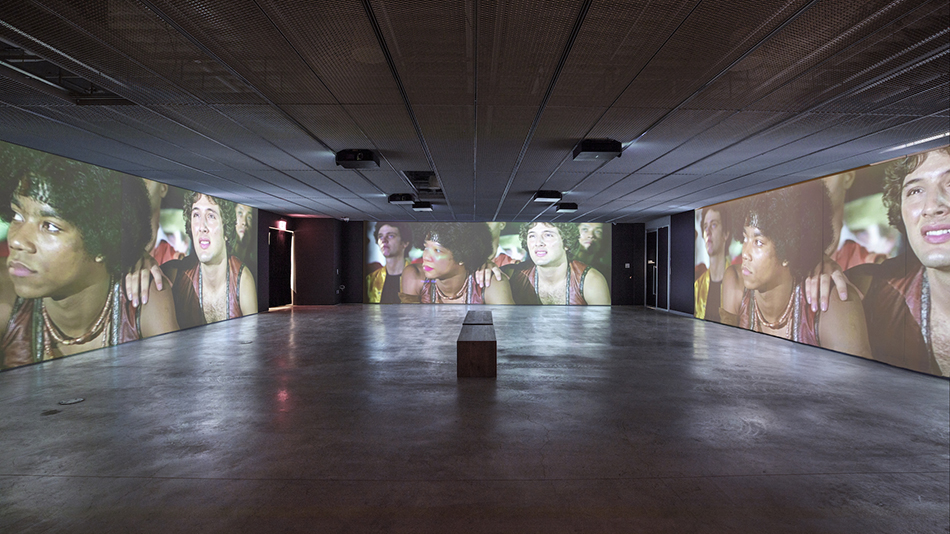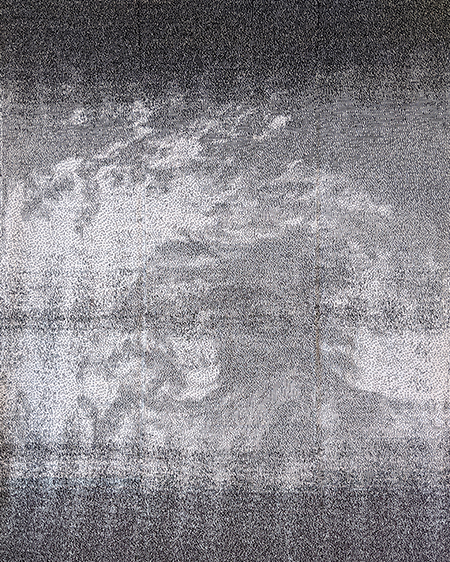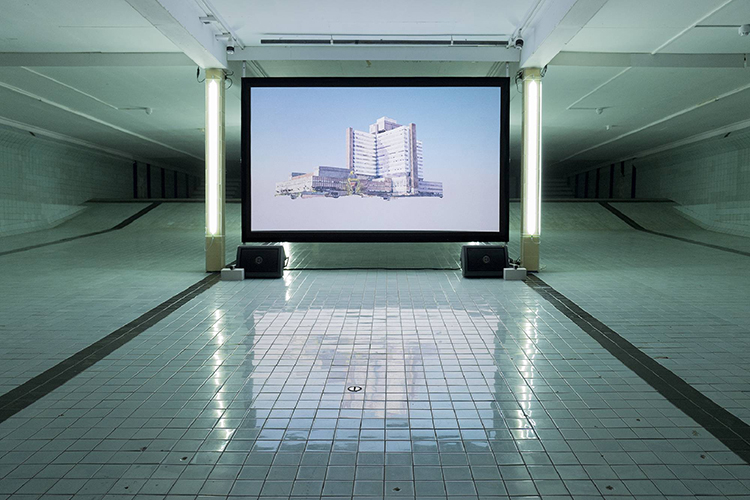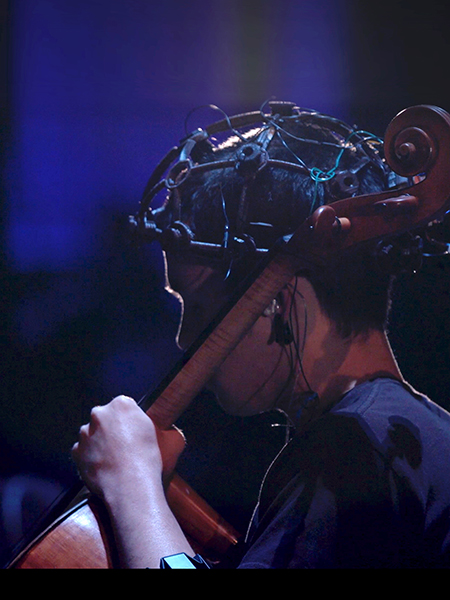
When founded 20 years ago, Digital Arts and Experimental Media (DXARTS) was a revolutionary Center of creative practice, research, and discovery at the frontier of new kinds of collaborations between artists, scientists, and engineers. Now a department with dedicated faculty, DXARTS continues to empower new generations of artists, cultivating an environment of intrepid inquiry with active partnerships across the UW campus and beyond. DXARTS challenges current trends, develops new approaches to artistic discovery, embraces diversity, and looks towards the future while celebrating traditions. DXARTS strives to explore the unknown.
VISIT DEPARTMENT WEBSITEEDUCATION

The Department of Digital Arts and Experimental Media (DXARTS) empowers students to create artwork with a global and regional impact, by providing access to resources, skills, knowledge, and transdisciplinary opportunities. DXARTS offers a PhD in Digital and Experimental Art practice, which was the first of its kind in the world. All DXARTS PhD students are offered packages with full financial support.
DXARTS also offers a Minor in Digital and Experimental Art practice. This 30-credit non-competitive degree offers undergraduate students the opportunity to be part of a new generation of hybrid artists, leveraging cross-disciplinary knowledge and learning cutting-edge digital arts skills.
All DXARTS courses are open for the UW population at large. Students from a wide range of departments take DXARTS courses annually, including its popular year-long course sequences in digital video, digital sound, and mechatronics. DXARTS also offers advanced interdisciplinary research courses for graduate and undergraduate students, either as stand-alone offerings or partnering with other units. These courses, such as Art and the Brain, Sound and Space, Data-driven Art, E-textiles & Wearables for Art & Design, encompass areas of research in which DXARTS faculty are experts and are taught in state-of-the-art facilities.
Students
Winter 2023
- 13 PhD students
- 43 Undergraduate minors
CAMPUS PARTNERSHIPS, SERVICE, AND OUTREACH
DXARTS faculty, students, and staff’s numerous roles include collaborative teaching and research with the Dance Program, School of Drama, Art + Art History + Design, School of Music, Computer Science, Engineering, the eScience Institute, and many others units on campus. DXARTS engages in partnerships with university and regional museums such as the Henry Art Gallery, Burke Museum, Jacob Lawrence Gallery, Seattle Art Museum, and with performance venues such as Meany Center, Town Hall Seattle, and the Seattle Symphony.
In recent years, DXARTS has developed partnerships with corporate organizations such as Google and Microsoft Research, and received funding from federal agencies such as the National Endowment for the Arts.
FACULTY

Winter 2023
- 5 Professors
- 1 Associate Professor
- 1 Assistant Professor
- 3 Emeritus Professors
- 7 Adjunct Faculty
- 6 Affiliate Faculty
DXARTS faculty are international leaders and pioneers in many areas of digital and experimental arts. Their works span the spectrum of emerging arts disciplines. Collectively the faculty exhibit and perform at museums, concerts, galleries, and festivals around the world. Awards and honors to DXARTS faculty include prizes, grants, and fellowships from Prix Ars Electronica, Creative Capital, National Endowment for the Arts, Mellon Foundation, and more. DXARTS faculty works are regularly presented at national and international venues such as ZKM, International Center of Photography, Ars Electronica Festival, Studio Acusticum, FIBER Festival, Transmediale, Eyeo Festival, Kunstraum Kreuzberg, etc. DXARTS faculty works have been published by Universal France, Wergo, Centaur, Neuma, Le Chant du Monde, Sargasso Records, Amazon Prime Video, etc.
FACILITIES
In 2019 DXARTS established a partnership with UW Housing and Food Services and the College of Engineering to move its off-campus Digital Fabrication Lab (Fab Lab) to campus. The new DXARTS Fab Lab, located in McMahon Hall, provides advanced computer-aided design, 3D printers, CNC manufacturing and prototyping machines, as well as traditional fabrication tools. This facility also hosts workspaces for faculty and PhD students, as well as the DXARTS Observatory: a flexible project space for installation research and exhibitions.
DXARTS’ Art + Brain Lab enables students and faculty from both art and natural science backgrounds to conduct hands-on research, fostering artistic collaborations arising from investigations at the intersection of neuroscience and art.
The DXARTS Sound Lab hosts advanced software and hardware for the reproduction of 3-D audio at high fidelity. A 24.4-channel speaker array in a full spherical layout projects sound from around, above, and below listeners and is suitable for use in a variety of soundfield synthesis techniques.
The DXARTS Media Lab is a a dynamic, multi-use space for experimentation, research, performance, and instruction. The Lab features an open floor plan with a 19.2-channel “dome” of speakers and a large HD cinema projection system.
RESEARCH

DXARTS faculty and students may work in a particular area of experimental arts or draw from several areas. Many work at the extreme boundary of known arts and sciences disciplines, often creating sophisticated new tools and methods to pursue their work. Current faculty projects include:
LISTENING SPACE (Psarra, 2019-2020)
A collaboration between Afroditi Psarra and textile designer Audrey Briot, Listening Space is an artistic research that engages with the detection of weather data from the NOAA satellites using software-defined radio and the translation and archiving of that data through a series of knitted fabrics. Listening Space was awarded the 2019 Bergstrom Award for Art and Science from the UW College of Arts and Sciences, it was published and exhibited at the 23rd International Symposium on Wearable Computers, London; presented as a video performance at Our Networks 2020 online out of Toronto and has formed part of the online art exhibition at ISEA 2020 out of Montreal.
HUMAN SUBJECTS (Pampin, Karpen, 2019-2020)
A collaboration between the JACK Quartet and DXARTS Professors Juan Pampin and Richard Karpen, Human Subjects was composed through a three-year generative process involving a series of experiments in which the members of the JACK donned EEG headsets and EMG armbands to explore new extended performance techniques based on brain and nervous system sensing. This project was made possible through the UW Creative Fellowships Initiative with funding from the Andrew W. Mellon Foundation.
Areas of Scholarship
- Algorithmic Composition
- Ambisonics and Sound Beamforming
- Art and Neuroscience
- Brain-Computer Interfaces
- Creative Coding
- Data-driven Art
- Digital Fabrication
- Digital Music Composition and Performance
- Digital Sound Synthesis and Processing
- E-textiles & Wearable Computing
- Immersive Media
- Mechatronic and Robotic Art
- Physical Computing
- Sensing and Control Systems
- Sound Art
- Video Art
CONTACT
Department of Digital Arts & Experimental Media
Box 353414
University of Washington
Seattle, WA 98195
phone: (206) 543-4218
email: dxarts@uw.edu
web: dxarts.washington.edu
last update: January 2023